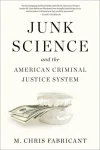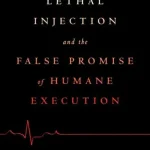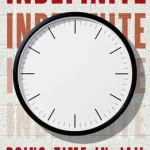Junk Science and the American Criminal Legal System
 Author: M. Chris Fabricant
Author: M. Chris Fabricant
Publisher: Akashic Books, 2022. 368 pages.
Reviewer: Imran J. Syed | March 2023
In discussing forensic science, the first challenge is to overcome the firewall that immediately goes up in most people’s minds with regards to all things science. Sure, they may love CSI or the occasional true crime podcast, but get into the actual science of any forensic science and you’ve probably lost them. However, given the five-alarm fire that has been raging in the world of forensic science for several decades, we really can’t afford to lose people when discussing this topic. Thus, Chris Fabricant’s Junk Science and the American Criminal Justice System is a welcome addition to the conversation; it will surely inform and appropriately enrage, while remaining accessible to readers with all levels of relevant background.
The 2009 report of the National Academy of Sciences (NAS) on the state of forensic science in America is often seen as the root of the current reform revolution in the field (p. 144). But, of course, the problems that necessitated that report go back much further. First, there are the tragic miscarriages of justice from the 1980s and 1990s: Fabricant centers his book on the stories of innocent men like Steven Chaney and Keith Harward who were wrongfully convicted and imprisoned due to the use of flawed forensic science. Their stories are important and illustrative, as I discuss below.
But even more than specific cases of injustice, the root of the problem is a much simpler point of disagreement. While science and law both emphasize the idea of ‘truth,’ how they perceive it is fundamentally different. The law values firm and final answers; expressing uncertainty is a sign of weakness. Science, on the other hand, is always looking to improve on what is known today to come up with new and better answers, and uncertainty is assumed. The clash of these very different ideologies in a courtroom has significant consequences which, unfortunately, have historically been ignored. And so, the justice system routinely hammers square pegs into round holes, leaving the horrifying wake of injustice that Fabricant recounts here.
Obviously, as a function of human growth and technological advances, the data available to scientists grows and changes over time. Thus, scientists must sometimes change their minds. Too often in a courtroom, however, the expert who expresses anything less than the utmost certainty is seen as unreliable. A favorite silly example that I use to demonstrate this point in class is a clip from the sitcom, It’s Always Sunny in Philadelphia. In his drive to discredit evolution and the science behind it, one of the main characters notes that some of the greatest scientific minds in history—Aristotle, Galileo, and Sir Isaac Newton—had a serious “problem”: “they kept being wrong. Sometimes.” And that’s the dealbreaker for him: if you have ever been wrong, you are done.
While the general public may not employ the epithets that the Sunny characters use to refer to scientists who have on occasion been wrong, we do tend to love perfection over rates of error. That the latter is among the defining characteristics of science (the Supreme Court’s famous Daubert opinion speaks to the importance of “known or potential rate of error”), and the former has been deemed to be antithetical to true science (Daubert also states that “arguably, there are no certainties in science”), such realities are lost on most jurors, lawyers, and the public. And this loss of understanding has monumental consequences.
As forensic science is increasingly used in courtrooms across America, Fabricant’s book—in chronicling some of the major missteps and attempts at reform in the past two decades—serves as a timely reminder to every lawyer, lawmaker, judge, and juror that the stakes are incredibly high in any criminal case. Safeguards and education are critical to ensuring that only reliable forensic science is presented in our courtrooms and that prior convictions based on unreliable science are rectified.
Fabricant tells many origin stories here, each compelling and worth at least the space he gives them, and possibly further reading as well. The story of bitemark comparison is central, as it played a role in the two wrongful conviction cases that Fabricant discusses at greatest length: the Virginia conviction of Keith Harward and the Texas conviction of Steven Chaney. Fabricant uses these two cases to touch on many of the sub-issues in the forensic science world where failures have happened and where reforms must be targeted, from admissibility standards to the proper definition of the ‘relevant scientific community’ that must police each discipline.
From the rich backdrop of Chaney’s and Harward’s cases emerge many smaller narratives in the book, all contributing no less salient points to the overall discussion of forensic science errors and reform. Among these is the case of Brandon Mayfield, an Oregon man who was wrongfully arrested for committing the 2004 Madrid train bombings because his fingerprint was allegedly present on a bag of detonators found at the scene (p. 134). The problem? Mayfield had never been to Spain and the alleged fingerprint ‘match’ was a false match, showing that even a forensic technique as old and familiar as fingerprints could be unreliable if proper safeguards are not in place.
In the Mayfield case, and in other such cases, one of the missing safeguards is accounting for cognitive bias. While the suggestion that fingerprint examiners might be influenced by cognitive bias has at times been vehemently denied by those within the industry, Fabricant discusses the work of Dr. Itiel Dror, which has revealed that cognitive bias is ever present and must always be factored in (p. 132–35). Fabricant only passingly touches on how cognitive bias has affected other sub-disciplines within forensic science—forensic pathology, fire investigation, and even DNA analysis—but, understandably, space constraints limit how many fascinating examples one can discuss. And Fabricant does include many others to tell other parts of the story of forensic science error and reform.
Among the strongest and most complete sections is the discussion of fire science, which starts grimly by speaking of the old-school pseudo-science that led to the execution of an innocent Texan, Cameron Todd Willingham, in 2004 (p. 63). Later comes a discussion of John Lentini, the fire scientist who, by admitting his own past errors, played a leading role in bringing science into the field of fire investigation. Finally, there are compelling accounts of the Lime Street Fire of Jacksonville and the Wayne Carr case from Georgia, in both of which Lentini played a key role in realizing justice (pp. 112, 121).
Beyond the lively case examples (there are more than I have mentioned here, and all of them would be worth a further Google search by the reader), Fabricant also repeatedly hearkens back to some central themes. Among them is his frequent mention of ‘poor people science,’ a purposely charged term that serves to demonstrate how little scrutiny and importance is given to the validity of the science being used to convict people in criminal cases, despite the fact that lives are on the line each day in the criminal legal system.
But that all changes once money comes into play, and Fabricant frames this perfectly. After speaking of the wrongful conviction and execution of Willingham, he immediately leaps into a discussion on how the U.S. Supreme Court’s famous Daubert v. Merrell Dow Pharmaceuticals, Inc. decision came about by first noting that “[n]obody inside the magisterial well of the Supreme Court on March 30, 1993, was thinking about Cameron Todd Willingham. Nobody was thinking about the criminal justice system at all” (p. 66).
Chief in the minds of everyone that day—the day that the Supreme Court heard the most important scientific-evidence case in its history—was money. More specifically, the large amounts of it being paid out in jury verdicts in civil litigation and the desire of wealthy corporations to cut this down immediately (p. 66). Indeed, nearly all of the leading cases about the admissibility of scientific evidence (including the Supreme Court’s Daubert trilogy, Daubert (1993), General Electric Co. v. Joiner (1997), Kumho Tire Co. v. Carmichael (1999)) came from the civil litigation world. Yet criminal defendants are allegedly entitled to protections that stem from the standards that such cases set for reliability of scientific evidence.
I say allegedly because criminal defendants actually tend not to get the benefits that such cases entitle them to. Although the Daubert line of cases has created robust pathways for challenging unreliable science and methods, even recent studies show that “[p]rosecutors virtually always won challenges, and virtually never lost challenges to their experts—even those with track records of fraud and wrongful convictions. Civil defendants, however, continued to enjoy the benefits of the Daubert decision” (p. 76).
Credit is also due to Fabricant for his attempts to return the discussion at various points to how racism, classicism, and a bias toward law enforcement has harmed the system. These influences have allowed the system to put in place procedures that would be seen as unfair in a vacuum, but have been readily accepted due to fears and assumptions stoked by decades of ‘tough on crime’ conversation. Needless to say, these discussions feel incomplete, but that is not a criticism. Too often, the role that such factors play in the supposedly ‘neutral’ lab-coat world of forensic science is overlooked entirely. But Fabricant does not make that mistake.
Fabricant ends by discussing some reforms that have burgeoned since the famous 2009 NAS report and the stifling of those reforms. It is always a complex situation; there is progress, but huge problems remain. For example, Fabricant doesn’t speak much about the current largest area of forensic science injustice: the use of questionable medical testimony to establish guilt in cases that involved what was once called ‘Shaken Baby Syndrome,’ (SBS) but today might be referred to by one of several other monikers (‘Abusive Head Trauma’ (AHT) being chief among them). Regarding SBS/AHT, Fabricant rightly notes that “[a]nother entire book could be devoted to wrongful convictions involving this largely discredited forensic diagnosis” (p. 234).
But perhaps another example that Fabricant does speak of is an apt place to leave this review. DNA testing is seen as the gold standard of forensic science, but that did not happen by accident. Rather, DNA analysis, from its very advent, has been tested, scrutinized, criticized, and improved. Even Barry Scheck and Peter Neufeld—co-founders of the Innocence Project, who saw from the start the vast potential of DNA to exonerate the innocent—initially approached the technique with skepticism (p. 96). They understood that the corporate interests that brought DNA testing to the market may not have had the incentive to police standards and methods as strictly as justice requires.
In fact, Scheck and Neufeld played a role in State v. Castro (1989), a famous case where forensic DNA was deemed inadmissible in New York courts (p. 97). By the layperson standard, forensic DNA testing was ‘wrong’ and should have ended right there. But, thankfully, it was the scientific perspective that prevailed, and Castro became an invitation to refine and improve DNA analysis so that it would be admissible in later cases. While DNA remains fallible today, that process of challenge, refinement, and improvement continues and makes DNA testing the gold standard for forensic science.
That lesson is often forgotten. In our inherent excitement over new technologies, we often forget that ‘promising’ and ‘potential’ do not mean ‘proven’ and ‘reliable.’ Boring as it might be, the justice system must only embrace the latter.
Imran J. Syed is a clinical assistant professor of law at the University of Michigan Law School.


